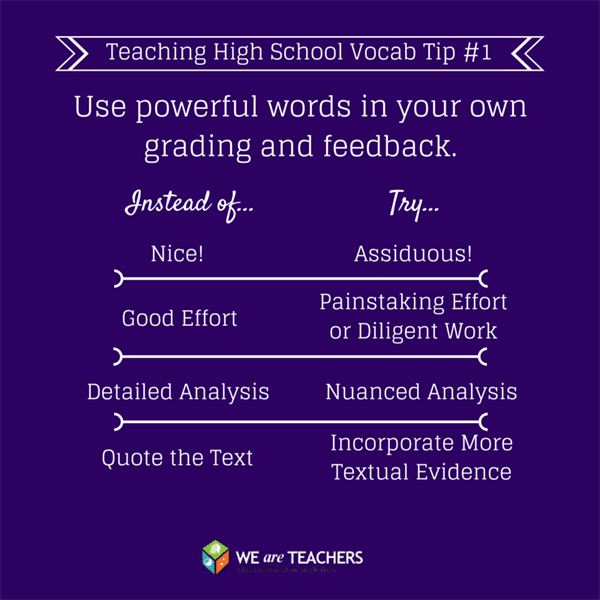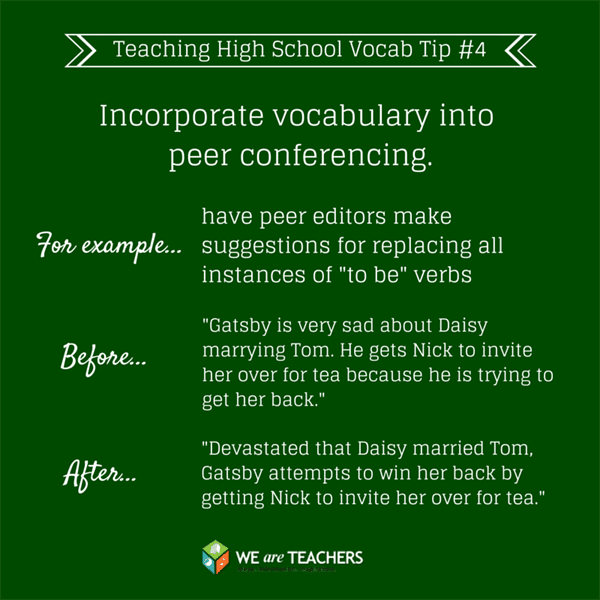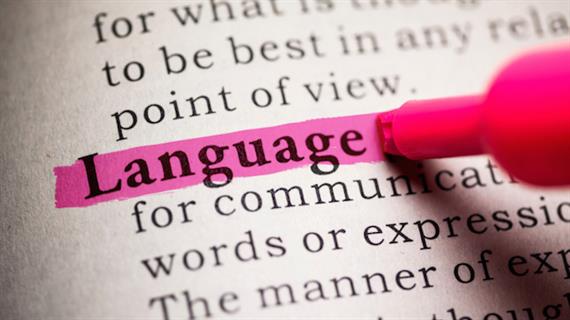Vocabulary is essential in the high school English classroom. Whether you use a traditional vocabulary program or simply work in word study where you can, here are some creative ways to focus on vocabulary instruction so that students are continually reinforcing their skills.
1. Use rich vocabulary in your own grading and feedback. “Great work!” and “Way to go!” are nice, but using higher-level vocabulary when giving written feedback will motivate students to learn more-sophisticated words as well as their usage. Connecting the language to their work is the ultimate motivation for kids to learn and remember the meanings of new words and phrases.

2. Incorporate rich vocabulary into your discussion of literary elements. After introducing students to tone in literature, for example, give them a comprehensive sheet of different words signifying various tones (for example, facetious, brash or malicious). Students can define the words they don’t know and then do different activities connected to the current book you’re reading as a class. For example, you could pull three passages from the book and have students use their reading skills and their knowledge of the meaning of the tone words to match the appropriate tone to each passage. You could do the same activity with a list of sophisticated adjectives and have them pair the adjectives with different characters. Having students apply the words to the book will help reinforce their knowledge of the meanings.
3. Make your own word wall (and no, your students aren’t too old for that!). Pin four large, bright pieces of paper around the room at the beginning of the year, and label them “verb,” “noun,” “adverb” and “adjective.” Each time a new word is introduced in class—maybe someone asks what a word from the text means, or you say something that they need you to reword or explain—give the definition, then have the students figure out its part of speech. Record the word on the appropriate poster. That way, you’ll have an ongoing record of words introduced throughout the year. These become great visuals for students to look at and reference when expressing themselves in class.
4. Incorporate vocabulary into peer conferencing. This activity gets kids collaborating and using stronger verbs and more diverse sentence structures. Before they swap essay drafts with partners for peer conferencing, have each student circle every instance of the verb “to be” in the draft. This could take the form of any conjugation: is, are, was, were, be, being and so on. When they switch papers with their partners, in addition to your normal peer feedback requirements, have students suggest how their partners could rework the sentences to eliminate all uses of “to be.” This could mean sentence combining, and, in many instances, swapping out a stronger verb for “to be.”

5. Acknowledge students’ use of strong vocabulary. For the weeks you have a conventional vocabulary list of words, post them in the classroom so they are visible. If a student uses a vocabulary word during class discussion, add a point to the student’s participation grade for the week. To make keeping track of all the points simple, keep your grade book open so your roster is easily on hand, and limit the number of days you do this. If a student doesn’t use the word correctly, use it as a chance to take a break from what you’re discussing to see if another student can rework the usage so it’s being used correctly.
6. Do a vocabulary warm-up. Create your own “word of the day” using difficult words from the book you’re currently reading. Write the word, the definition and the page number of the book in which the word was originally found. After students copy down the word and definition, have them read the original sentence in the text and then write their own sentence using their knowledge of the word based on the definition and the context clues from the book. Students then swap sentences to read and deepen their understanding of the word (Bonus: This is also a great chance for them to ask questions about the word and for you to address them one-on-one!).
Learn how you can power up your students’ vocabulary with the new edition of Prestwick House Vocabulary Power Plus, which has helped over 1 million students get ready for the SAT or ACT while improving their vocabularies.

